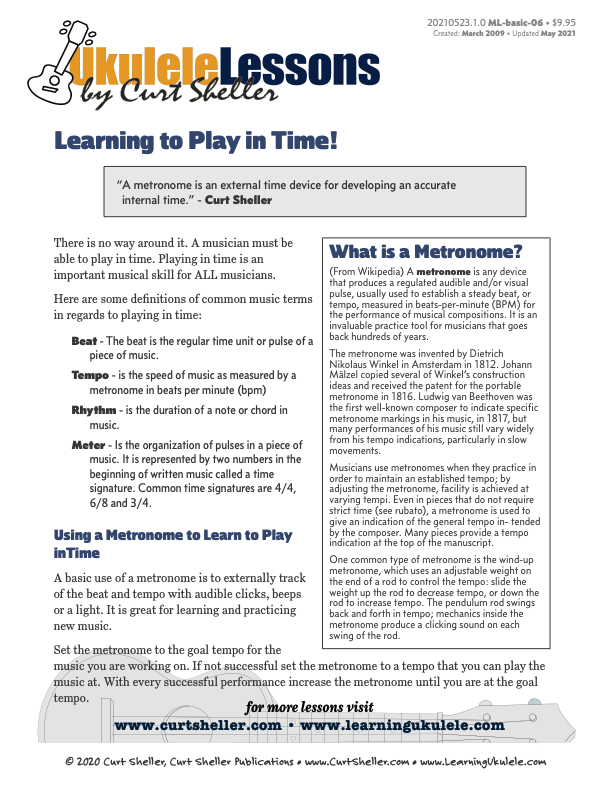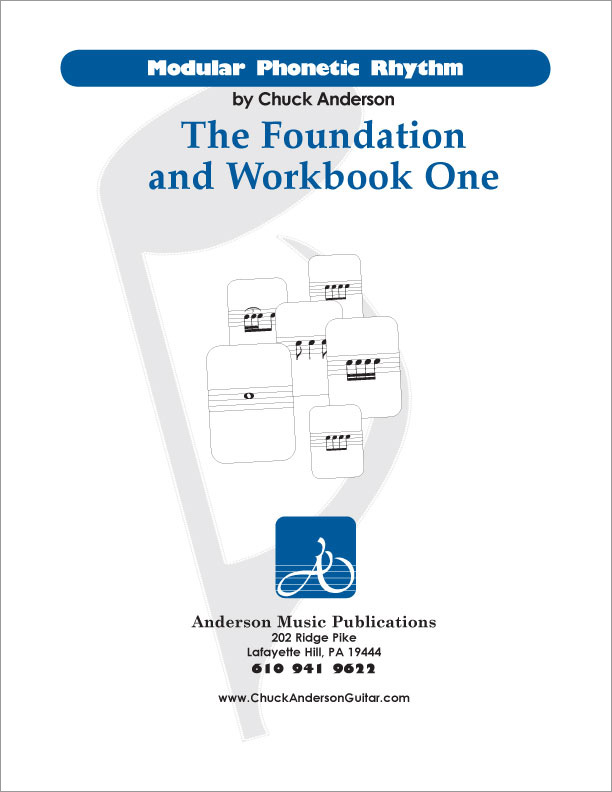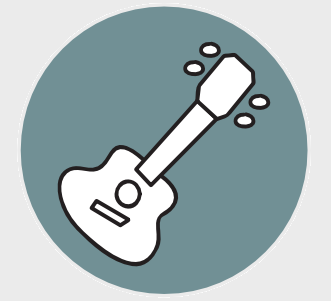A metronome is a device that produces an audible click or other sound at a regular interval that can be set by the user, typically in beats per minute (bpm).
A metronome is a device that produces an audible click or other sound at a regular interval that can be set by the user, typically in beats per minute (bpm).
A Metronome is an external device to help you musically synchronize your internal time with a musical external time.
— Curt
Using a Metronome involves the following steps:
- Buy one, or find the one you already own and never use.
- Turn it on and use it.
First, The Why?
It is as simple as playing accurately and in time with yourself, and especially with others. The with others is the situation where you can tell the difference in musicians, a.k.a., players that have spent time developing their internal timekeeper and those that have not.
I tell all my students. I can't tell if your are counting, only if your should be counting.
The playing in time can be ready apparent when listing to a recording our your playing. You WILL hear when you were early or late and not playing n time.
Well, it really is that simple. However, here are a few more tips to get the most our of using a metronome.
First — All, a metronome is simply an external timekeeper to help you develop your own external timekeeper. Avoid the metronome at your peril. Ralph Shaw - King of Ukulele calls this syndrome — Metronome Avoidance Disorder (MAD).
But, I Don't Have Rhythm!
You will hear this retort at times. EVERYONE has rhythm (at least 99.99% do). I made up that percent, but I've never ran across anyone who didn't pass this next test.
For anyone that says I Don't Have Rhythm
. Have them count backwards from 10 to 1. Unless they are Christopher Walken , they will most likely do it in time, and with an even count — they have rhythm. More then likely, they just never worked on developing it accurately using their instrument of choice — In our case, the ukulele.
Tips for Using Your Metronome
- Start SLOW and increase the tempo a few clicks, no more than 3 or 4 bpm at a time.
- Don't stop unless it's a real train wreck. For minor problems, keep going – you're going to do the section, piece again.
- Break the music down to a section, measure, line or two notes at a time before proceeding. Music is nothing then two moment in time — the current moment and the next moment
- For difficult melodies, separate the rhythm from the notes and learn the phrase monotone—as if it were one note.
- Start the metronome and leave it on for your entire practice session . Get used to
Playing in Time`
Your playing WILL NOT become Mechanical
— just better and more accurate.
EVERYTHING you do musically and technically should be accurate and on purpose. That is why we put the time in — to get better at what we already can do.
If reading music, it can be broken down to note recognition and rhythm. These can be separated to identify any problem areas in each.
EVERY musician, yes ALL musicians are responsible for keeping time in a band situation. It's not the role of one musician vs. another.
Metronomes
Get yourself a metronome, an external source for helping your develop a internal sense of time and rhythm.
Web Sites & Apps
Here are few places to find a metronome online. Every app store has multiple metronomes available for download to your computer, tablets or phone.
- guitarapp.com • This is the online metronome that I'm using right here. Also an iOS app for: Lessons | Tuner | Metronome | Chords
A Few Other Metronome Resources
- flutetunes.com Metronome • This online metronome allows you to set the tempo using the common tempo terms such as: Presto, Allegro, Andante, Largo, etc.
- Musica Metronome • A very simple metronome right in a browser. Musicca is a most popular music learning platforms, with several million monthly users in more than 150 countries. Based in Denmark, but our team comprises people from around the world.
- Google Metronome • A very simple metronome right in a browser.
- Metronome • A GNOME (Linux ) Flatpak app .
Your fellow ukulele players and musicians will NOT know you are using a metronome–ONLY if you should have be using a metronome.
— Curt Sheller
Related Lessons, Videos, Lesson Series, Songs, Books & Reference Charts, Resources & Assets, Workshops are below.

"Modular Phonetic Rhythm" by Chuck Anderson represents a significant advance in the teaching and application of rhythm. Eliminating many inefficient aspects of rhythm education, Modular Phonetic Rhythm streamlines the traditional educational approach, resulting in a reflexive reaction to rhythm. This approach is applicable to all ages and to all styles of music.

Playing in time is an essential skill that every musician must possess. There are no shortcuts or alternatives when it comes to this aspect of music. Keeping your place while playing is a crucial lesson that focuses on honing your ability to maintain a consistent tempo and rhythm throughout your performance.

Modular Phonetic Rhythm represents a significant advance in the teaching and application of rhythm. Eliminating many inefficient aspects of rhythm education, Modular Phonetic Rhythm streamlines the traditional educational approach, resulting in a reflexive reaction to rhythm.

Modular Phonetic Rhythm represents a significant advance in the teaching and application of rhythm. Eliminating many inefficient aspects of rhythm education, Modular Phonetic Rhythm streamlines the traditional educational approach, resulting in a reflexive reaction to rhythm.

Finally, learn the names of the notes of the ukulele fingerboard in C tuning .

Learn the six fingering principles to navigating the ukulele fingerboard. Fingering is one of the most universal topics. Book: Six Secrets of the Ukulele Fingering

Harmonic Analysis is the understanding of the functional sequence of chords. It is the process used to analyze the harmonic structure of a progression, song or composition. Book: Harmonic Analysis for Scale Selection and Chord Substitution

Learn to read single note melodies in the first/open position is a lot easier than you might think. Book: Ukulele – Reading Music Series – Primer

An organized collection of daily practice and reference material for the contemporary ukulele player for developing the vocabulary and knowledge necessary for single note playing. Book: Daily Practice Material for the Contemporary Ukulele
Checkout the Books & Reference Charts for additional Handy, Dandy Reference Charts.

Ukulele Fingerboard Chart for C Tuning, Low or High G – G C E A

Ukulele Fingerboard Chart for G Tuning, Low or High A – D G B E

A handy reference chart of all 15 major and relative minor key signatures. US Letter 8.5 x 11 sized (ANSI-A), A4
Checkout the Books & Reference Charts for additional Handy, Dandy Reference Charts.




.jpg)